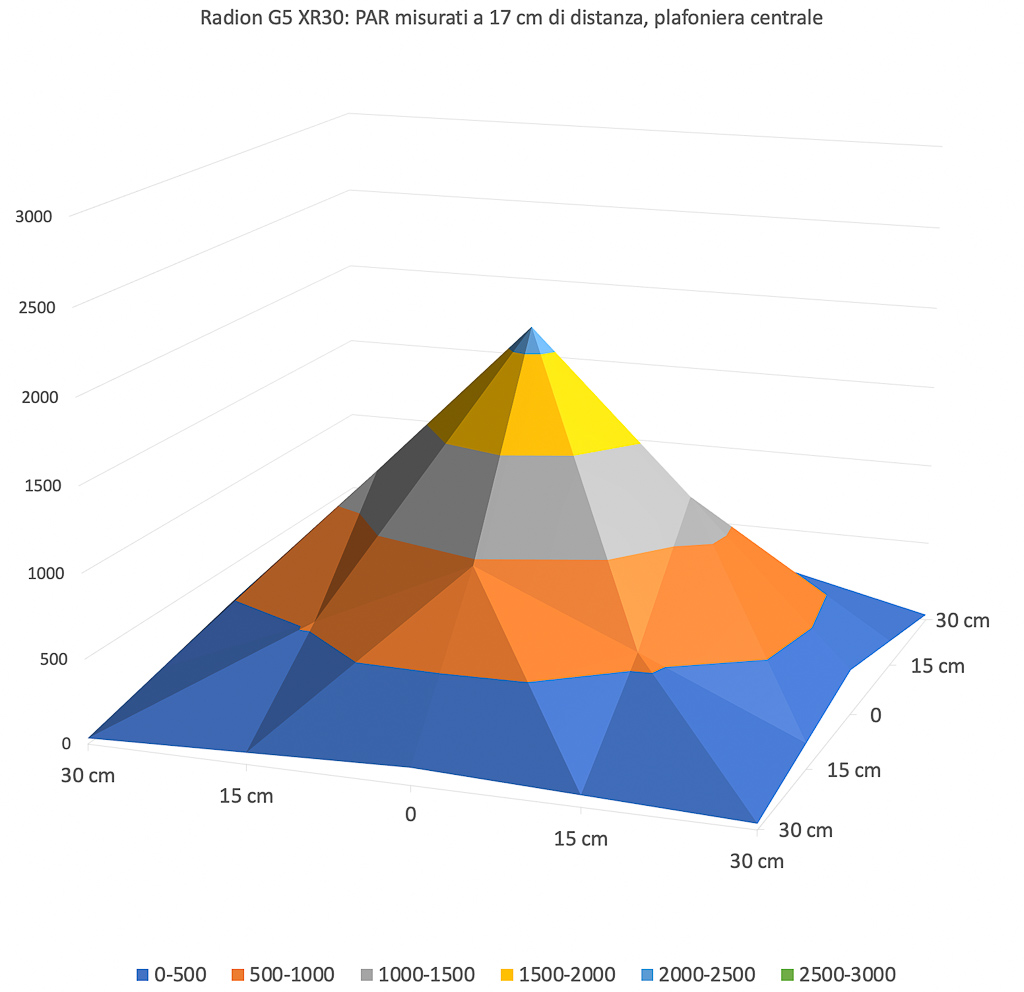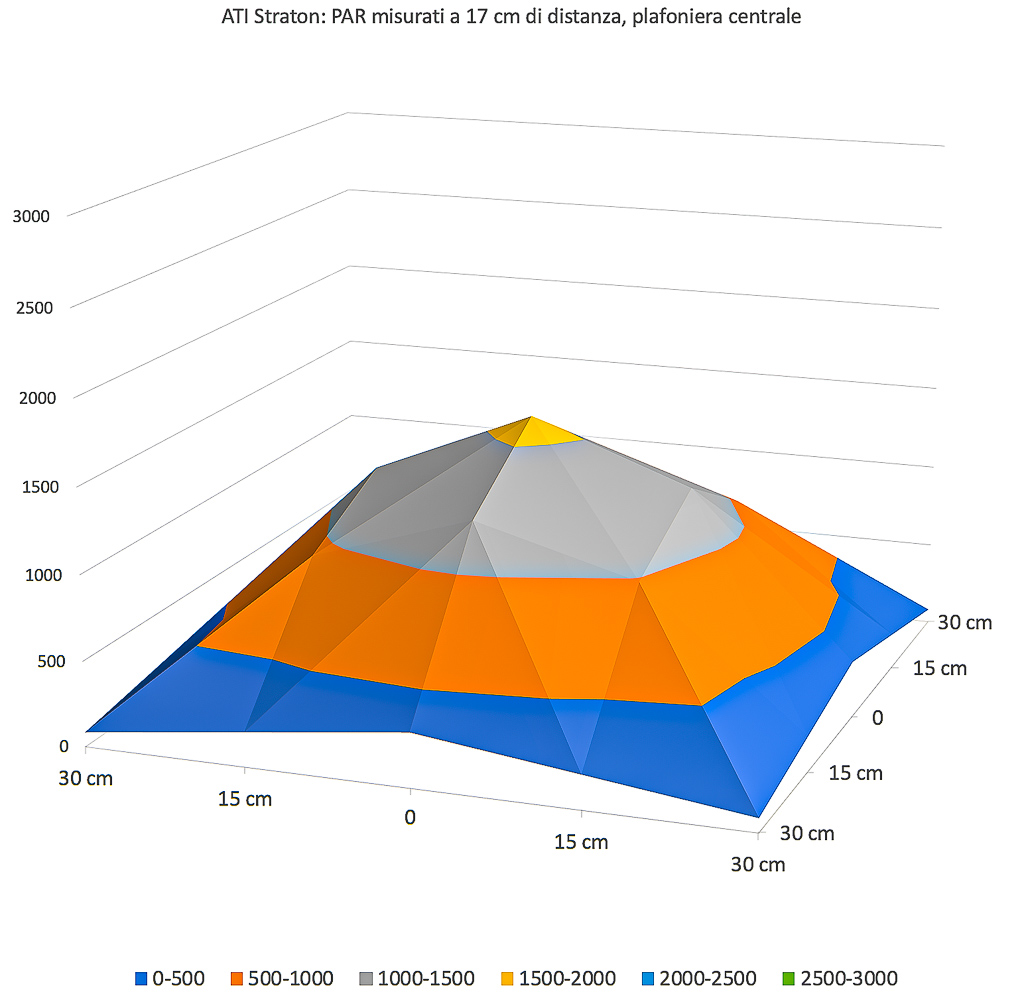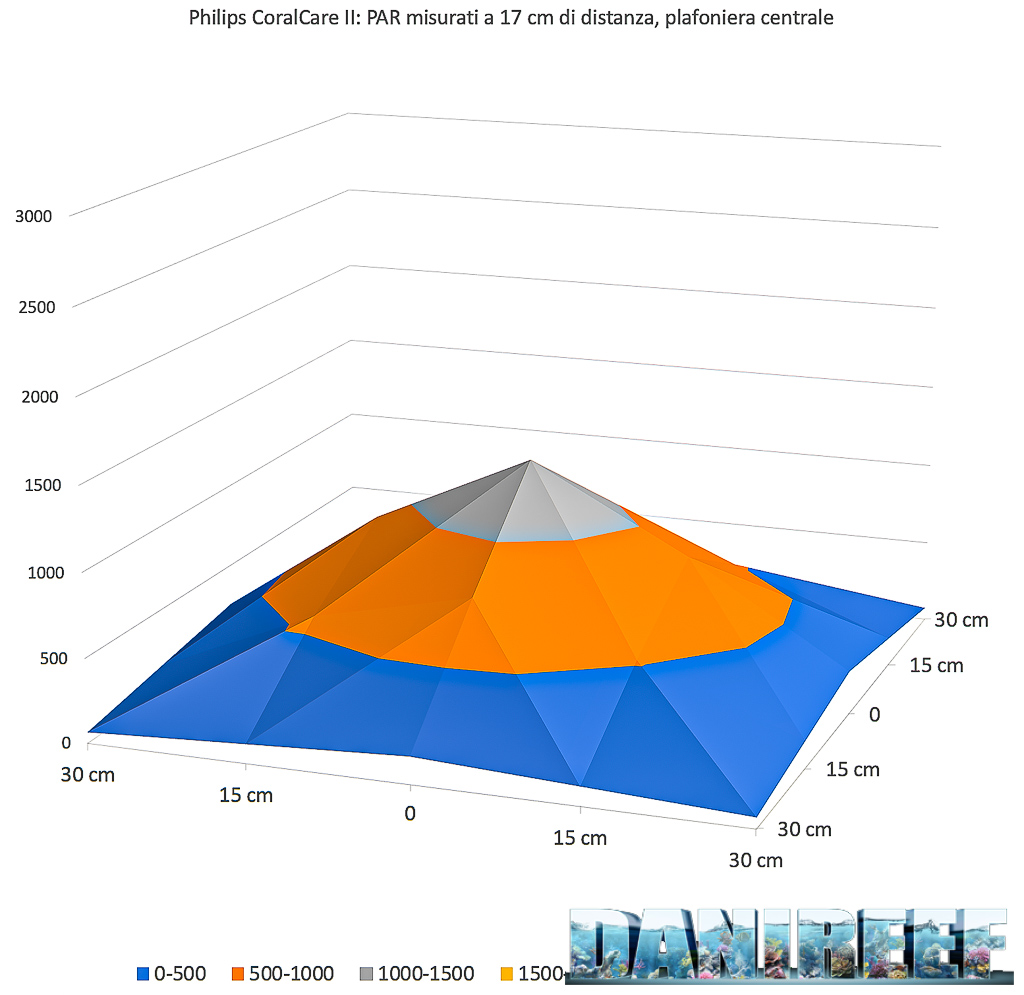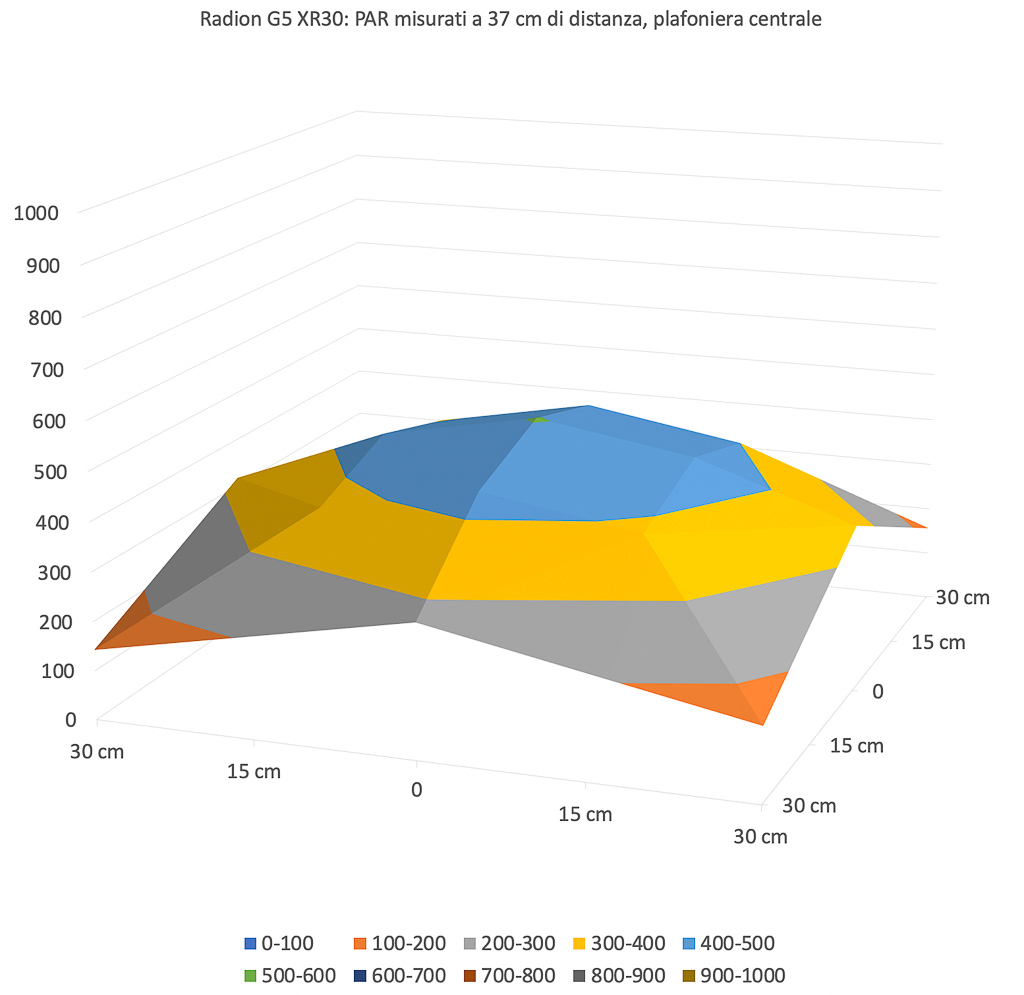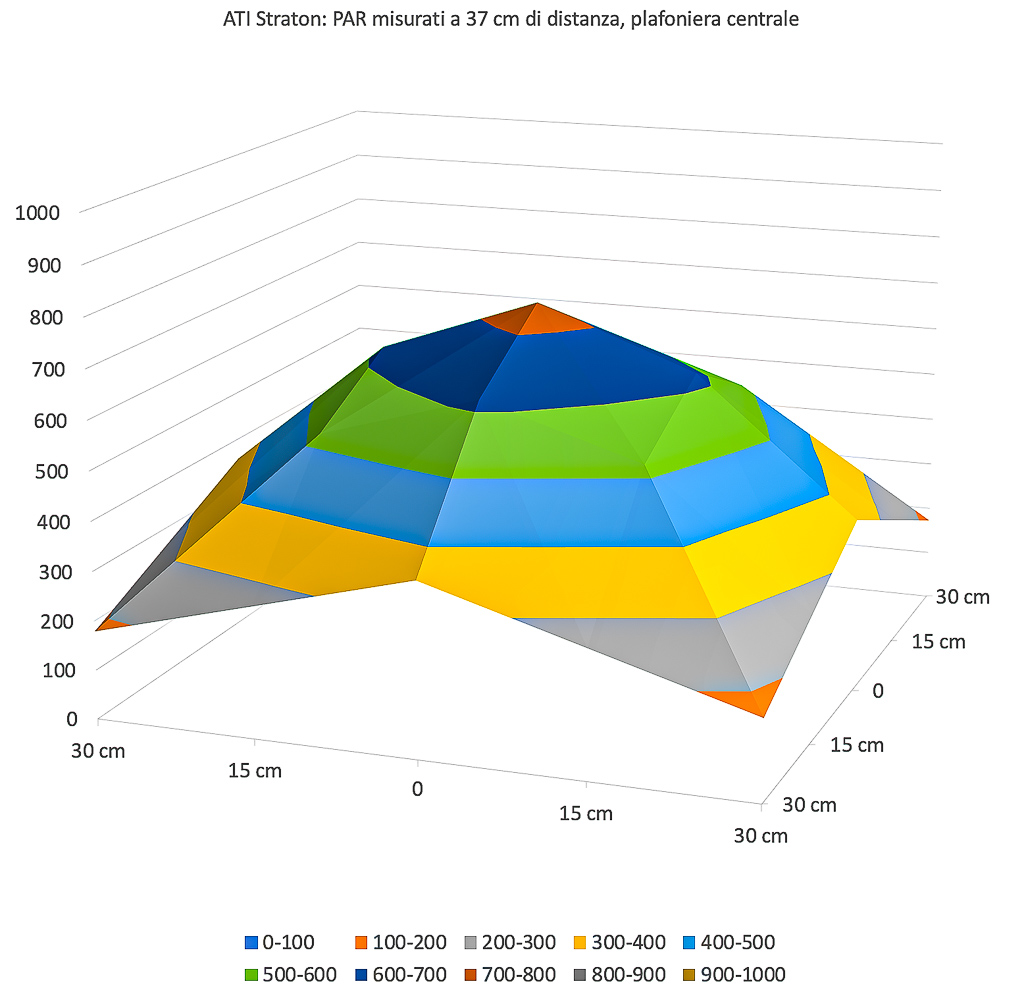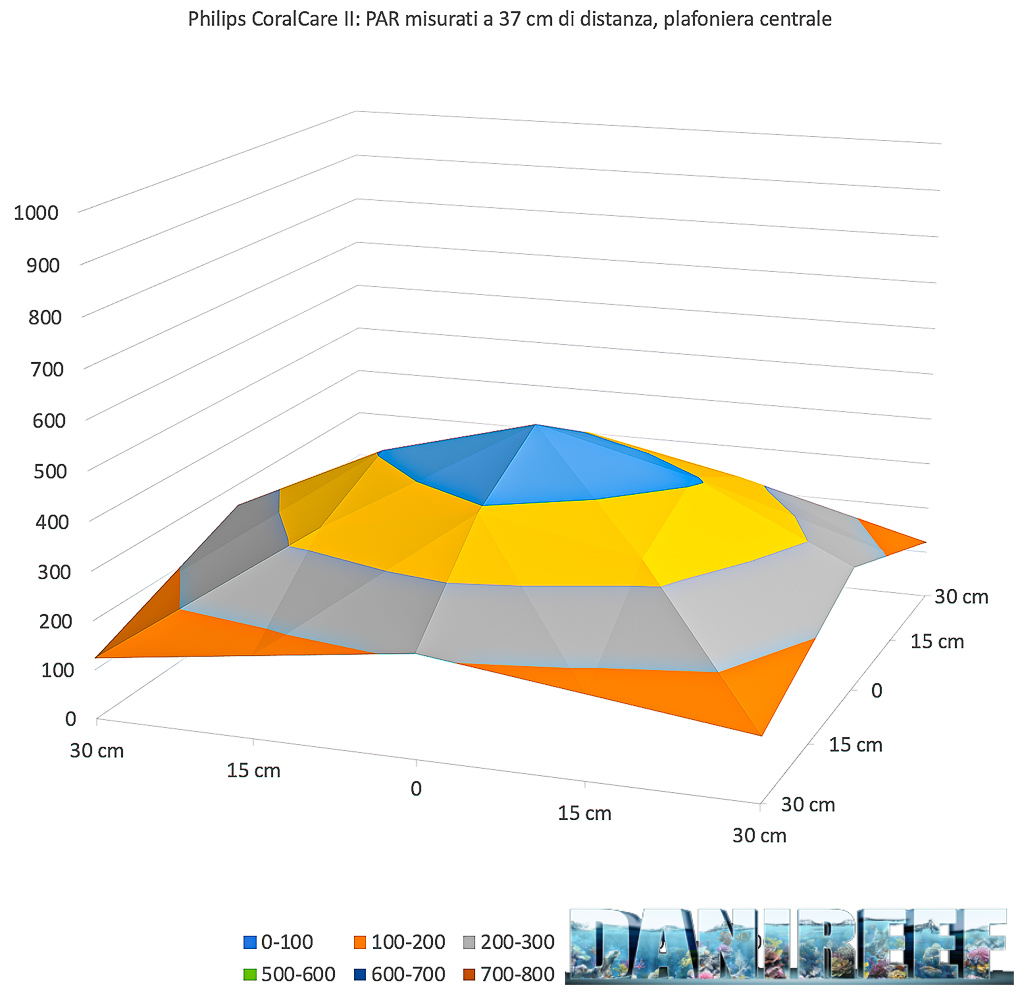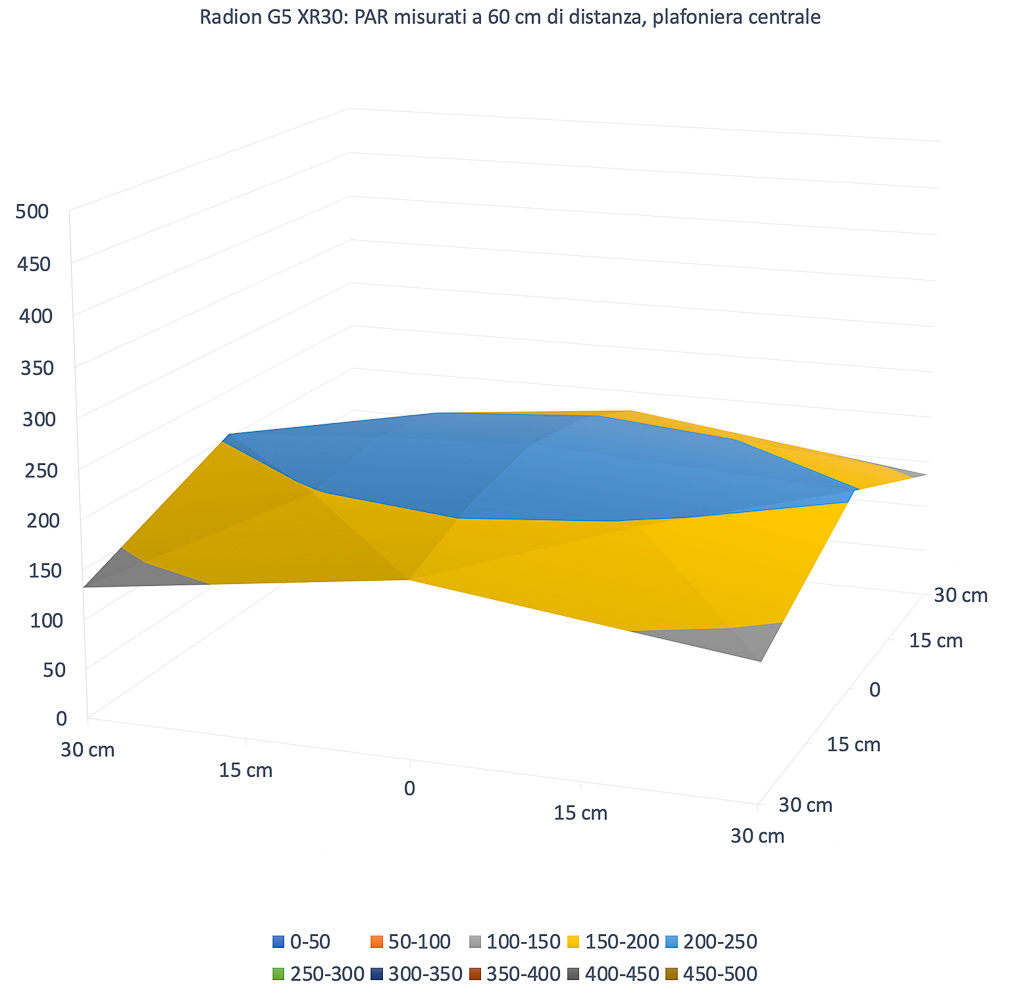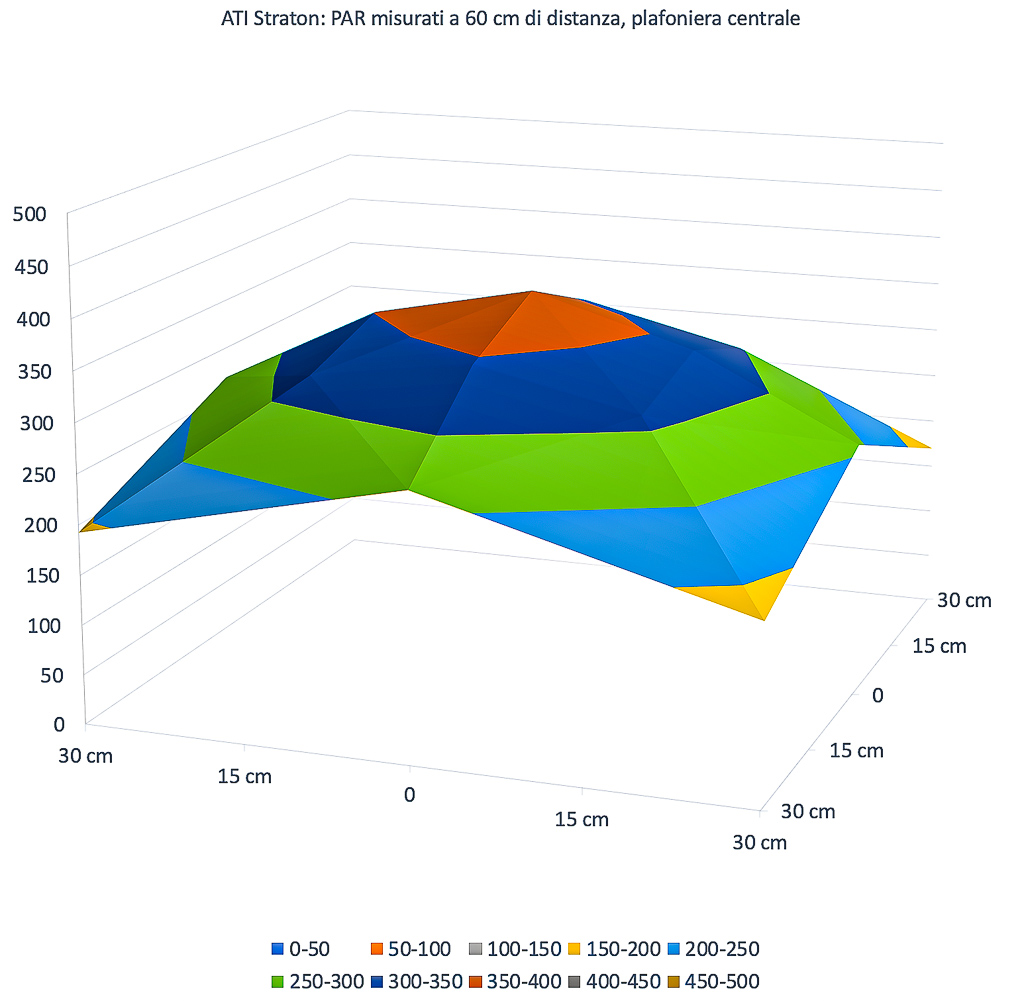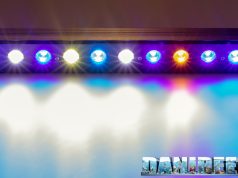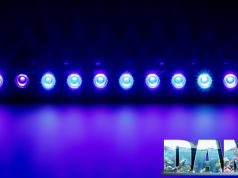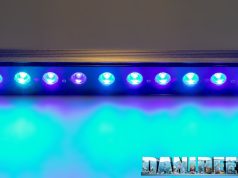Our new method DaniReef LAB for PAR measurement of the Orphek Atlantik iCon
Antefact: During the long nights spent on our forum we always wondered how could we compare PAR from different ceiling lights. Even though we had the perfect device, the Quantum Meter MQ-510 di Apogee, we always referred only to the value measured at the centre at 20 cm of distance, more or less.
The Quantum Meter MQ-510 measures the PAR, expressed in PFFD that is photosynthetic photon flux density in μmol m-2 s-1. This device is calibrated to work underwater, so if it’s in air the measured value has to be divided by 1,32 that’s the dive factor. We have to do the conversion. The values you’re going to see are correct.

We decided to make a square base of 70×70 cm, we set 17 fiducial points where we placed the sensor Quantum Meter MQ-510 and we also made 3 lifts of 20, 40 and 60 cm for the ceiling light, in order to have the same distance from the sensor. This will allow us to create the curves which can be compared to other ceiling lights’s, all tested at the same distances. Notice that this distance is measured between the base of the sensor and the ceiling light. In reality it should be decreased of 3,5 cm that is the height of the measurement cylinder and increased by 0,5 cm that’s the dimension of the spacers that lift the ceiling light.

In total the three measurements are made from 17, 37 and 57 cm of distance. Because they’ve been done in air they will be corrected.
PAR measurement from 17 cm of distance
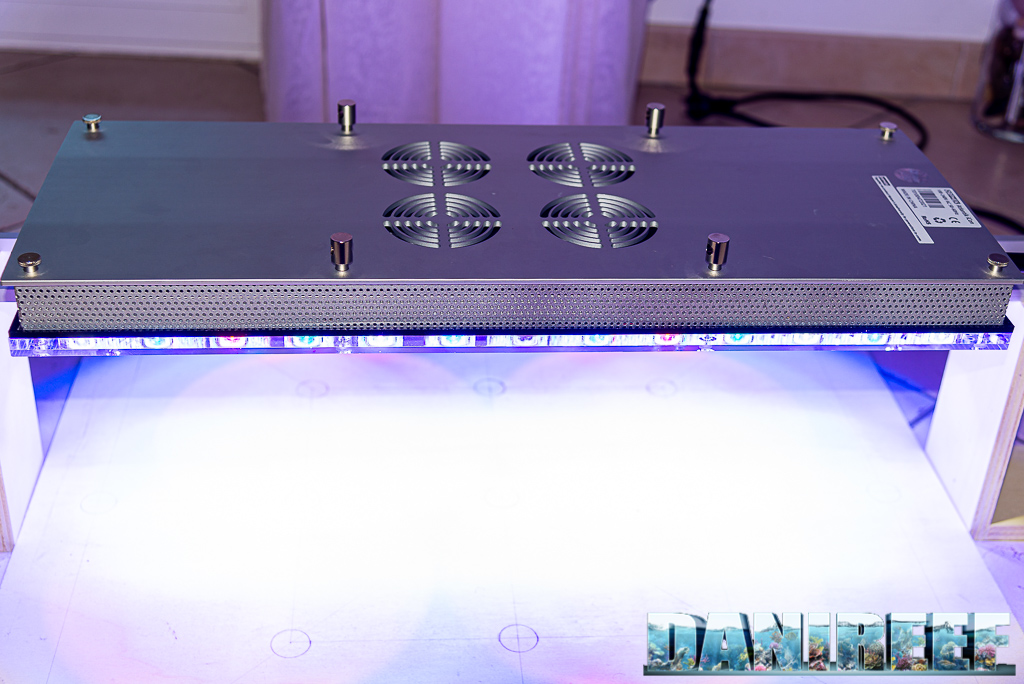
The ceiling light has been placed at 17 cm of the display. The points not indicated on the panel have been estimated in the following chart.
Here the collected values:
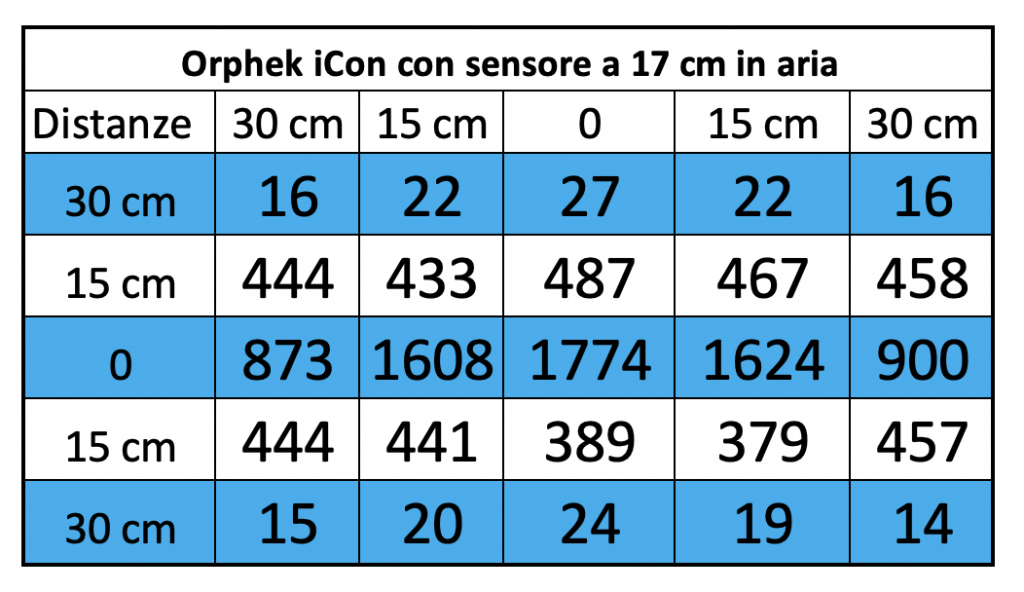
And this is the corresponding chart. We are using the same scale for ceiling lights with similar power.
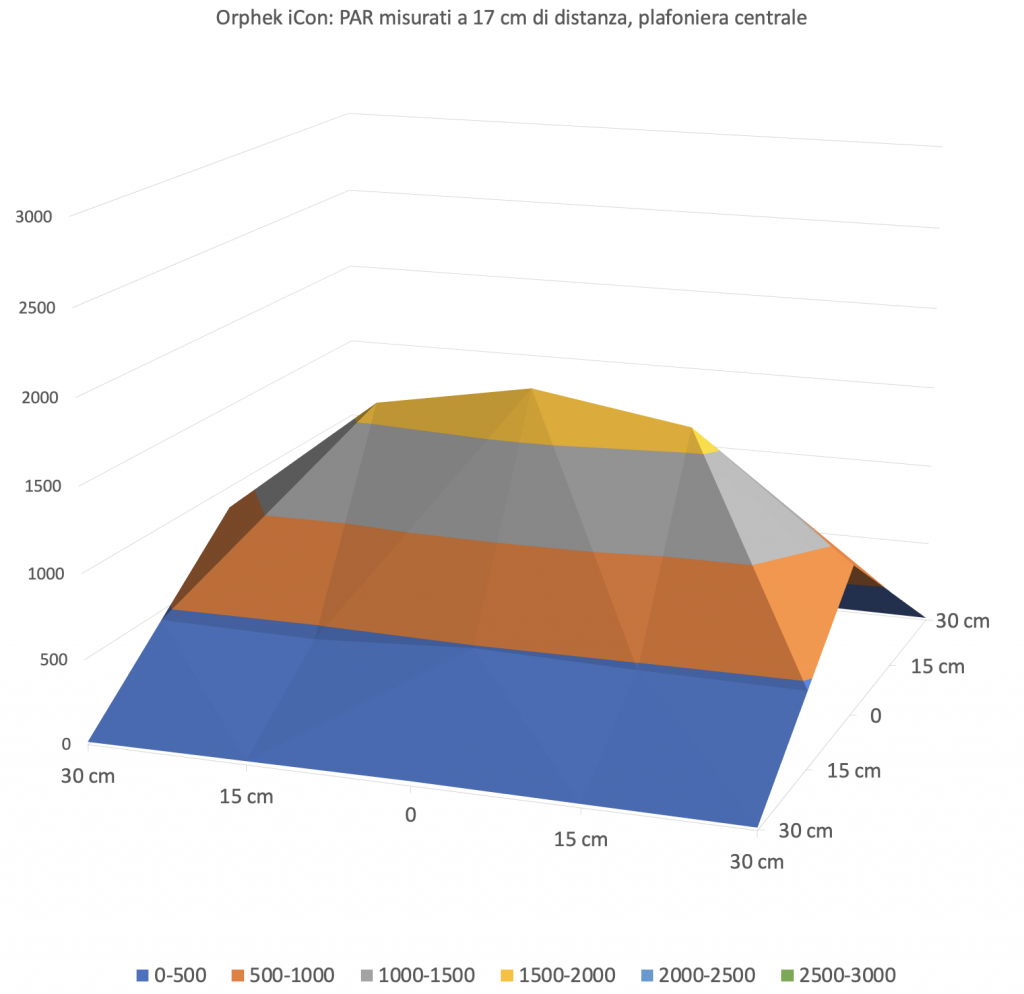
The first measurement has the shorter distance between the sensor and the ceiling light. The values of the expressed PAR are very high at the middle but very full along the entire length too, while on the front and behind they drop abruptly. This is obvious considering the sizes of the ceiling light: 61,5×23,8 cm.
The charts have share the same scale and colors when the PAR are comparable. The comparison with three similar ceiling lights (even if with different consumptions) makes the Radion stand out for its peak power. On the other hand, the ATI and the Philips reach a better coverage on the front and behind.
PAR measurement from 37 cm of distance
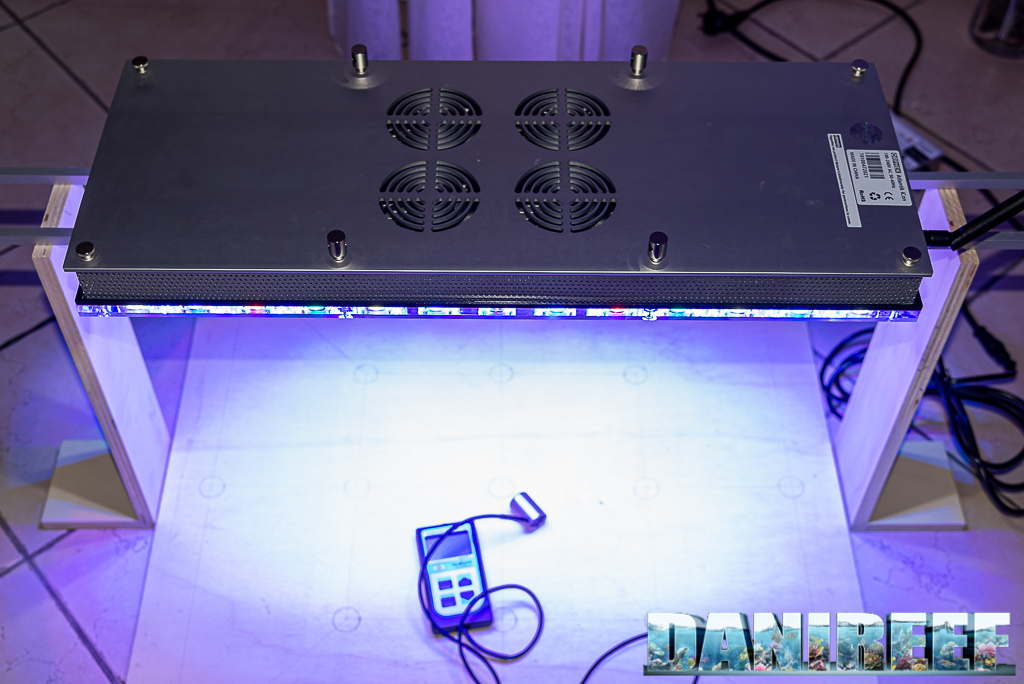
Then we placed at 37 cm of distance.
Here the collected values:
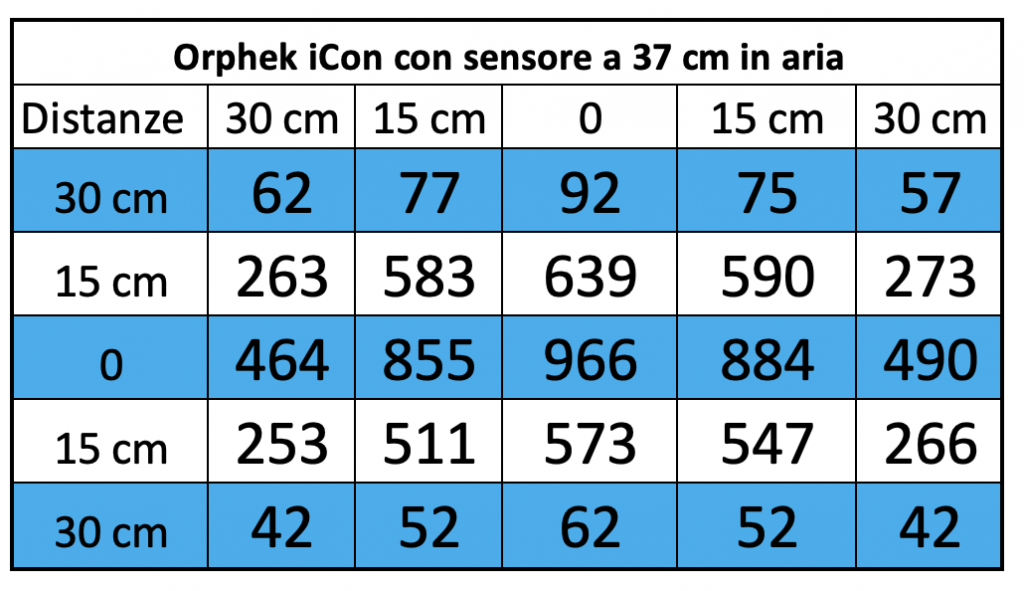
And the corresponding chart.
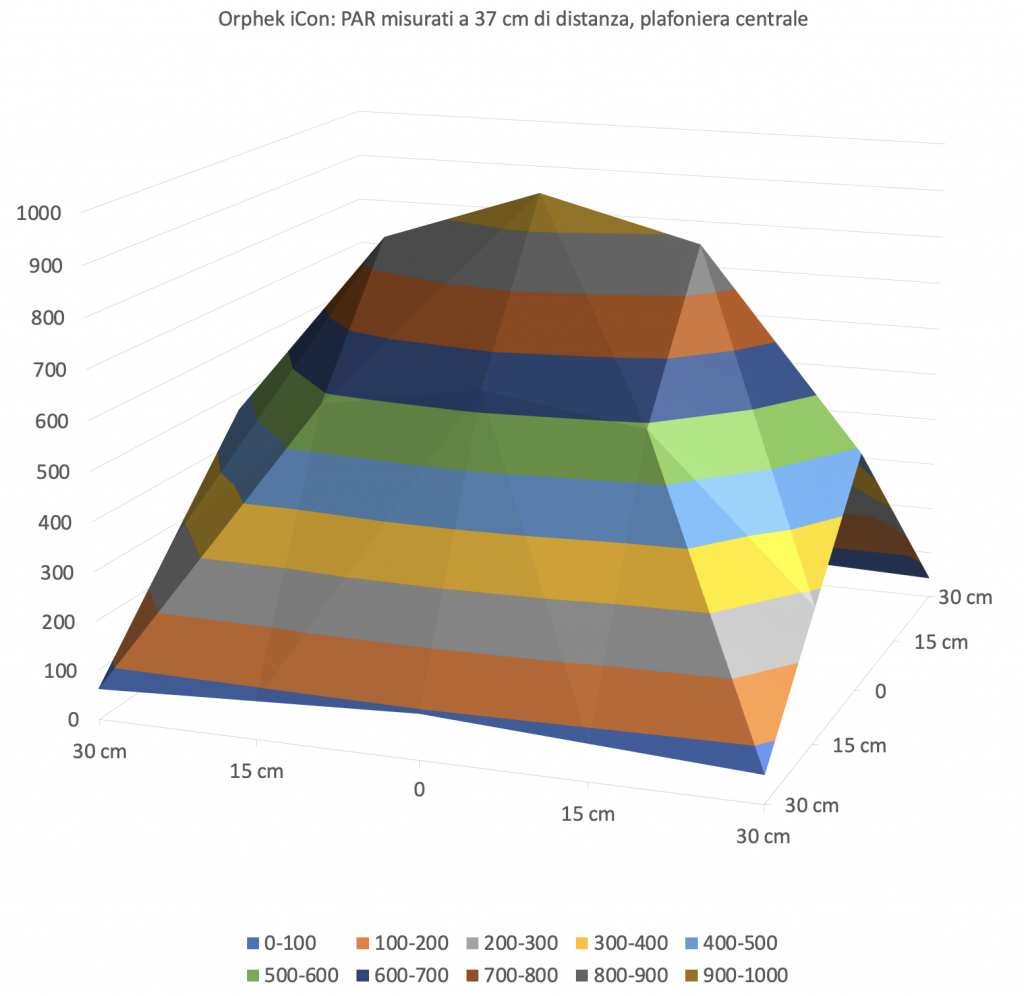
With a bigger space between ceiling light and sensor, the curve becomes more homogeneous. The peak value is incredibly high, given that it approaces 1000 PAR! The value in the middle decreases from 1774 to 966 μmol m-2 s-1.
At this distance the power is record breaking! While the competitors, even if with slightly less power, reach the half of the value, except for the Straton. On the sides, the Orphek is still the best, but on the front and behind it drops more the the others. For uniformity the Philips is still the winner, even if it has less power than all the others.
PAR measurement from 57 cm of distance
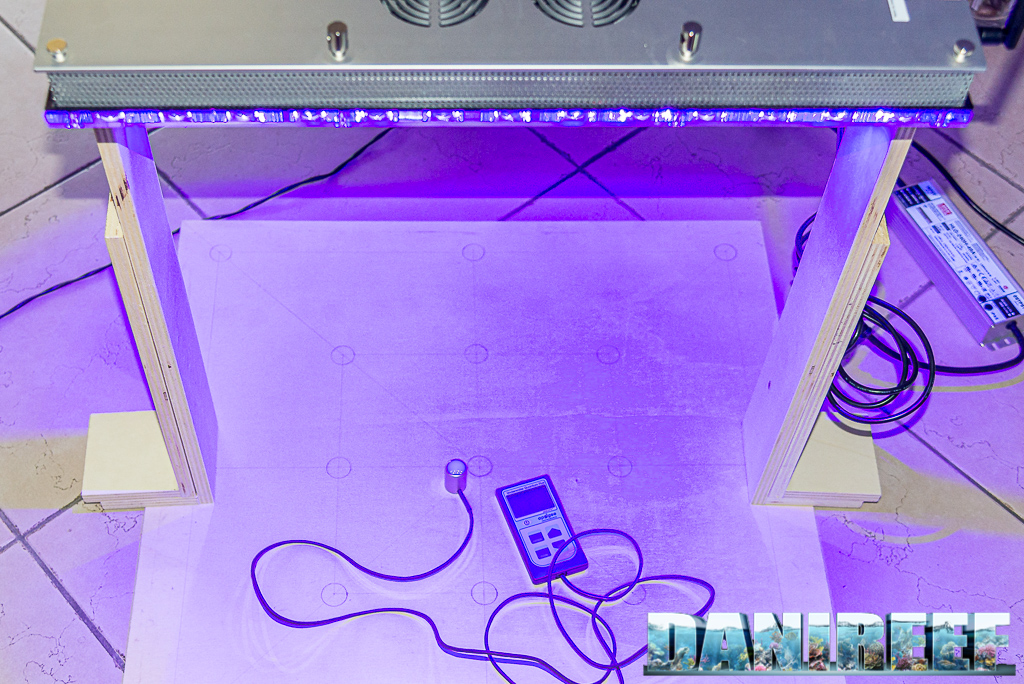
Then we placed as far as possibile, at 57 cm.
Here the collected values:
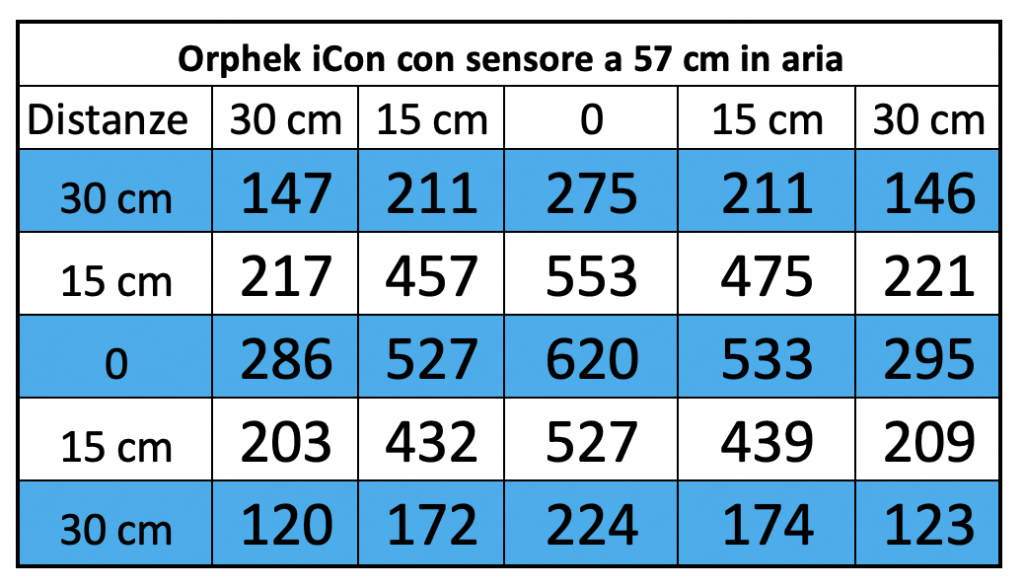
And this is the corresponding chart.
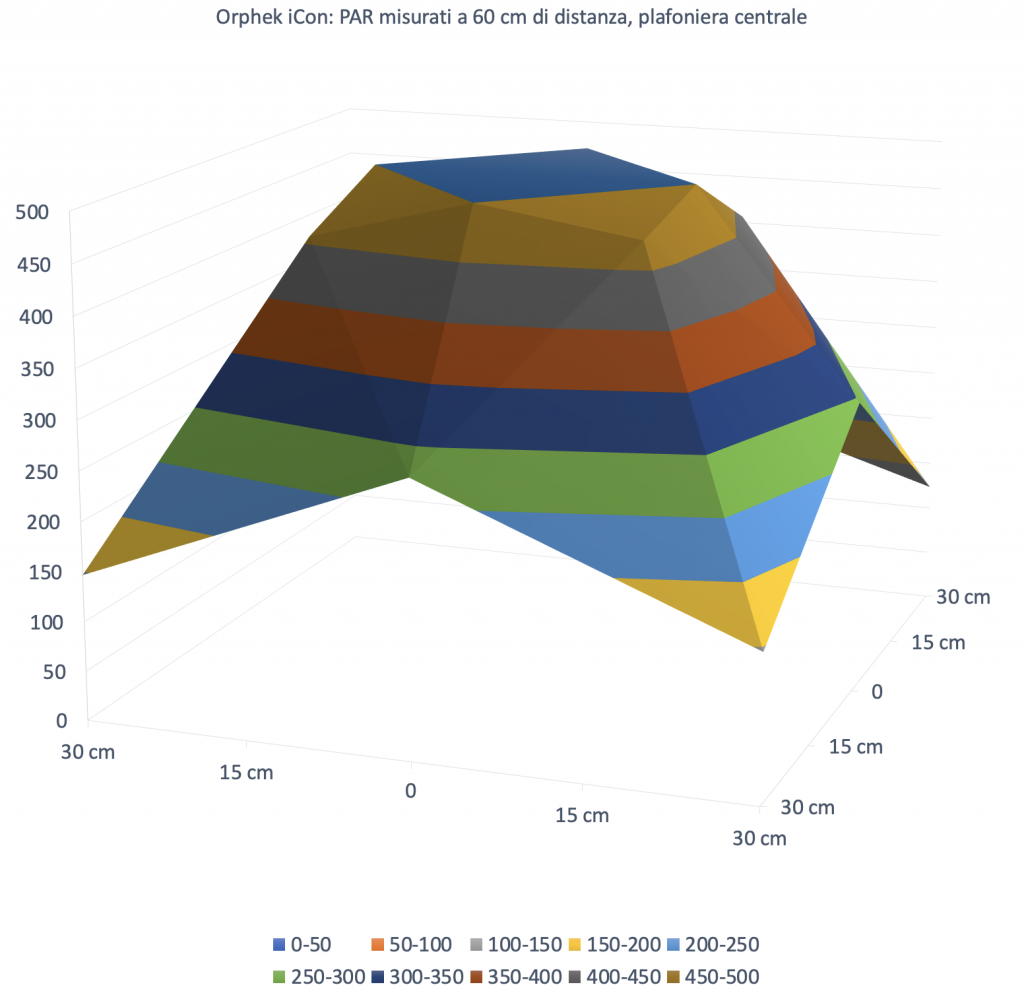
Until today we’ve always used a chart with the maximum at 500 PAR. We thought we woud never need to go further, but the iCon broke all the records, with 620 PAR in the middle! So we did a recalibration only for this ceiling light, so that you can see better the distribution of the light.
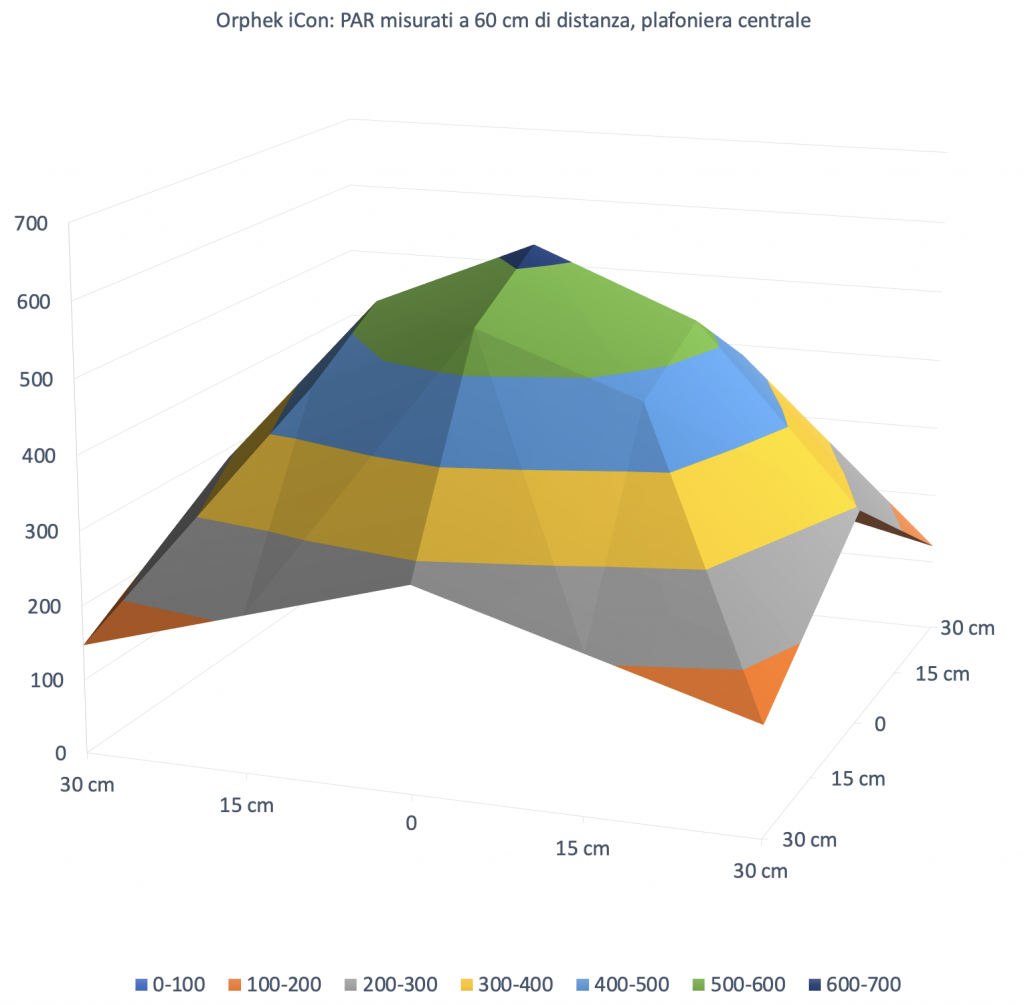
But if you want to compare the ceiling lights you have to refer to the first chart.
You only have to look at the charts to understand the power expressed along the ceontral line of the ceiling light. The value in the middle decreases even more from 1774 to 966 to 620 μmol m-2 s-1.
The differences are still the same as at 37 cm. At this distance the Orphek is even more impressive, while the other celing lights can claim more coverage on the sides. The Straton performs better than the others, but remember the difference of power among the ceiling lights.
The PAR in the middle in the different configurations
Let’s continue with our technical measurements. We can see how, in a chart, the PAR collected in the middle decrease in the three different distances of our tests.
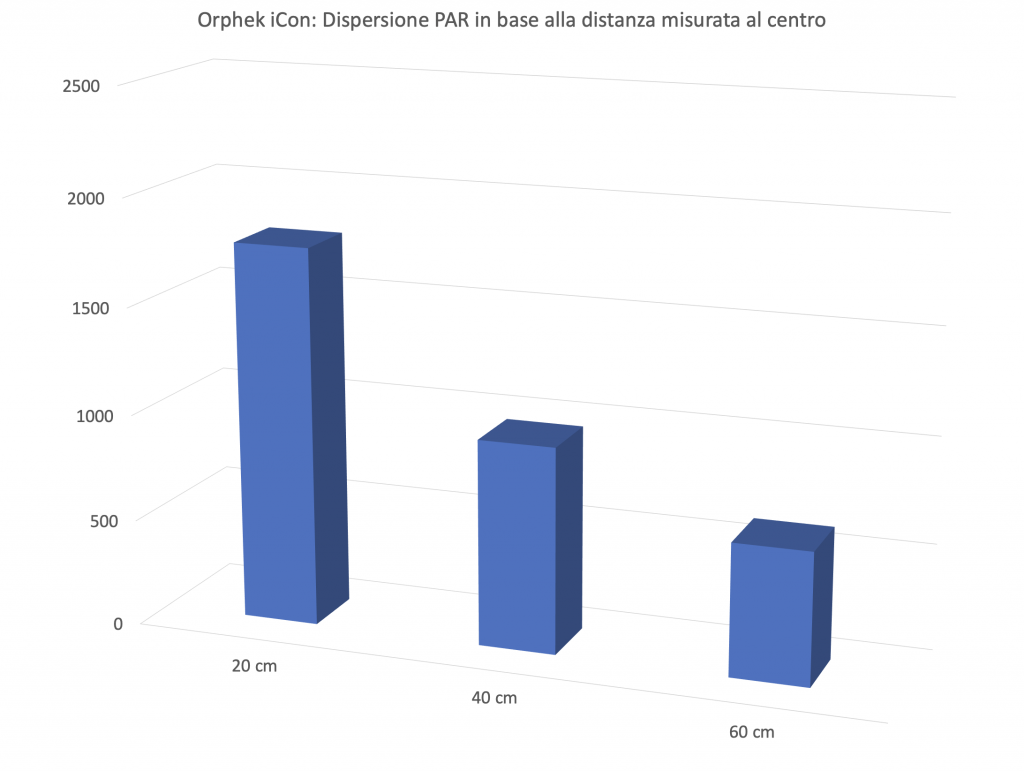
Energy variation of the Orphek Atlantik iCon depending on the distances
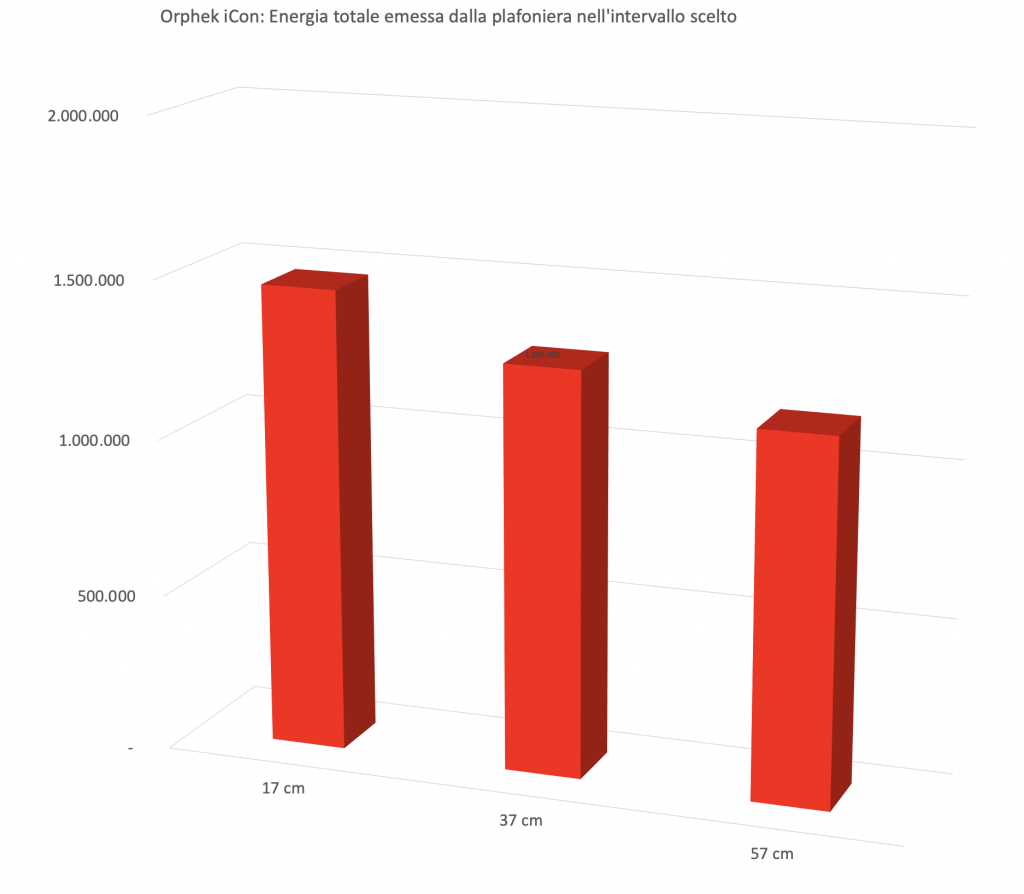
This is the most significant and most comparable data: the energy variation. We calculated the volumes of the three surfaces previously seen. It’s obvious that moving away from the ceiling light the PAR decrease, also because the light illuminates a wider space. In this way you can consider all the light energy contained in the 60×60 cm area subtended by the ceiling light. And the three values of 1.469.474, 1.286.030 and 1.155.746 assume a different connotation compared to the values in the middle. When the first ones decrease because of the increasing of the distances, the subtended area, that is the energy, decreases less.
For the iCon the values are almost identical at the three distances, this means that whole expressed light or, at least, for the most part, remains inside the 60 cm. It’s perfect for tanks until 60 cm, less indicated for 70 cm, 80 cm or even bigger aquariums.
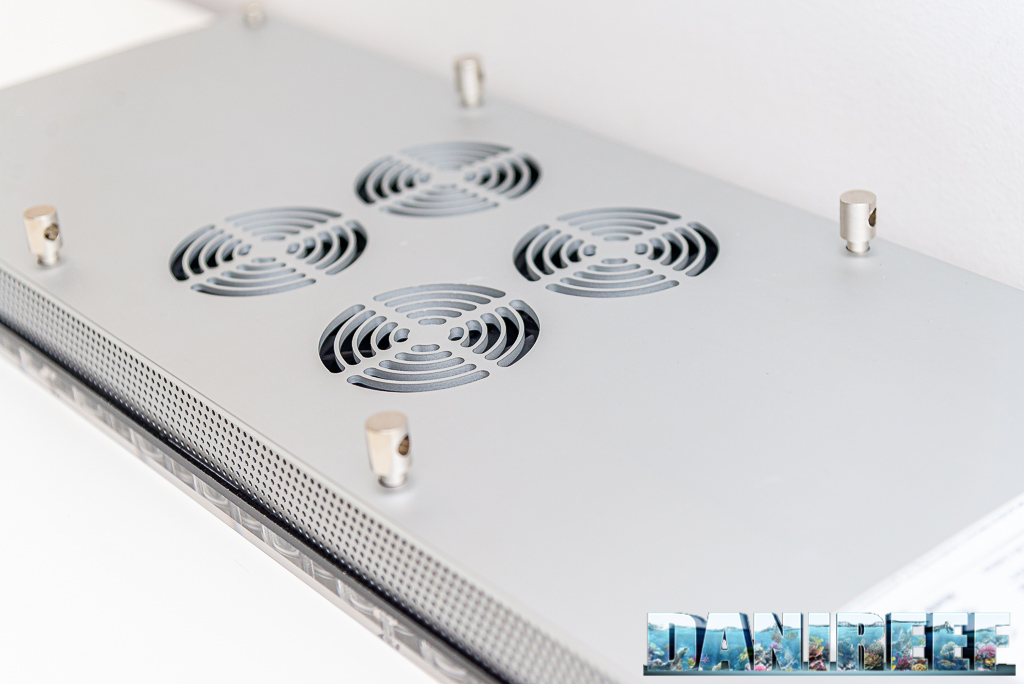
Values per channel in the middle in the three distances
We also measured the values per each channel, but only in the middle, in order to give you an idea of the contribution of the different channels on the PAR produced.
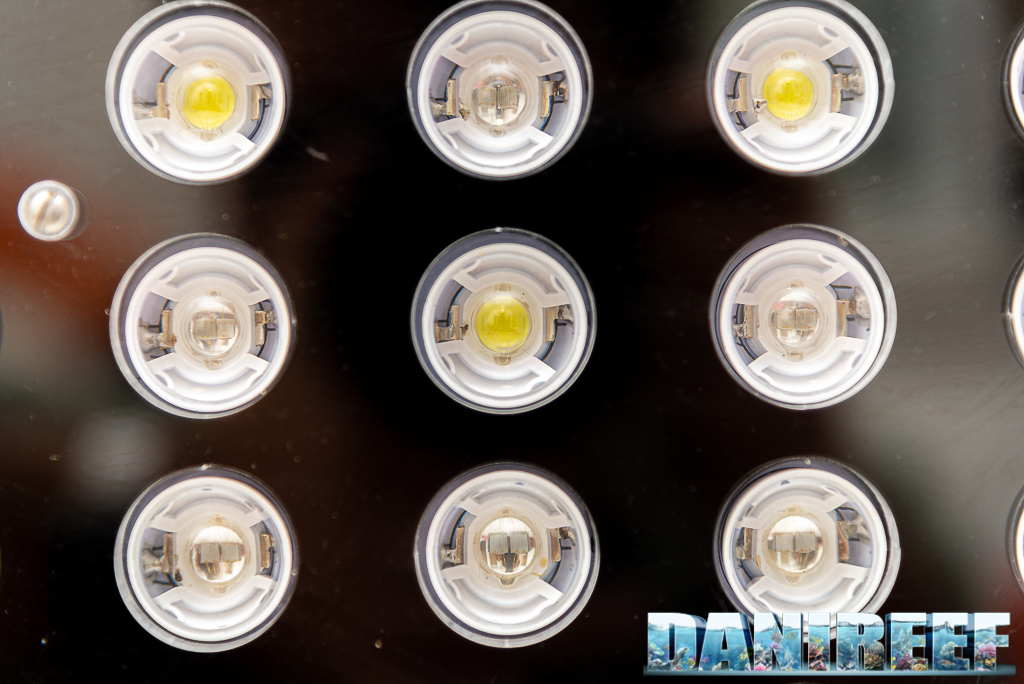
Let’s see the measured values:
| Distance= 17 cm | Distance= 37 cm | Distance= 57 cm | |
| Channel 1: Dawn and sunset (6000K) | 91 μmol m-2 s-1 | 100 μmol m-2 s-1 | 80 μmol m-2 s-1 |
| Channel 2: Solar noon (18,000K) | 422 μmol m-2 s-1 | 189 μmol m-2 s-1 | 111 μmol m-2 s-1 |
| Channel 3: Cyan blue (490nm, 470nm) symbiotic protection | 243 μmol m-2 s-1 | 157 μmol m-2 s-1 | 106 μmol m-2 s-1 |
| Channel 4: Blue (447nm) Chlorophyll c2 | 422 μmol m-2 s-1 | 189 μmol m-2 s-1 | 115 μmol m-2 s-1 |
| Channel 5: Purple (420-430 nm) Chlorophyll a and c2 | 436 μmol m-2 s-1 | 197 μmol m-2 s-1 | 120 μmol m-2 s-1 |
| Channel 6: UV/Purple (400-415 nm) Chlorophyll a | 261 μmol m-2 s-1 | 146 μmol m-2 s-1 | 92 μmol m-2 s-1 |
The five channels aren’t so different from eachother. Also, the singular impact changes greatly with the distance, probably because when they’re very close to the device the light doesn’t spread enough to affect it completely. The channels 2, 4 and 5 are the ones with the most PAR and with the exception of the first, the whitest of all, the others are all pretty close at 40 cm.
Consumption
The measurement of the consumption was made possible thanks to the useful device RCE PM600 that can also measure the Cos(fi) (or power factor). The result is already given in watt.
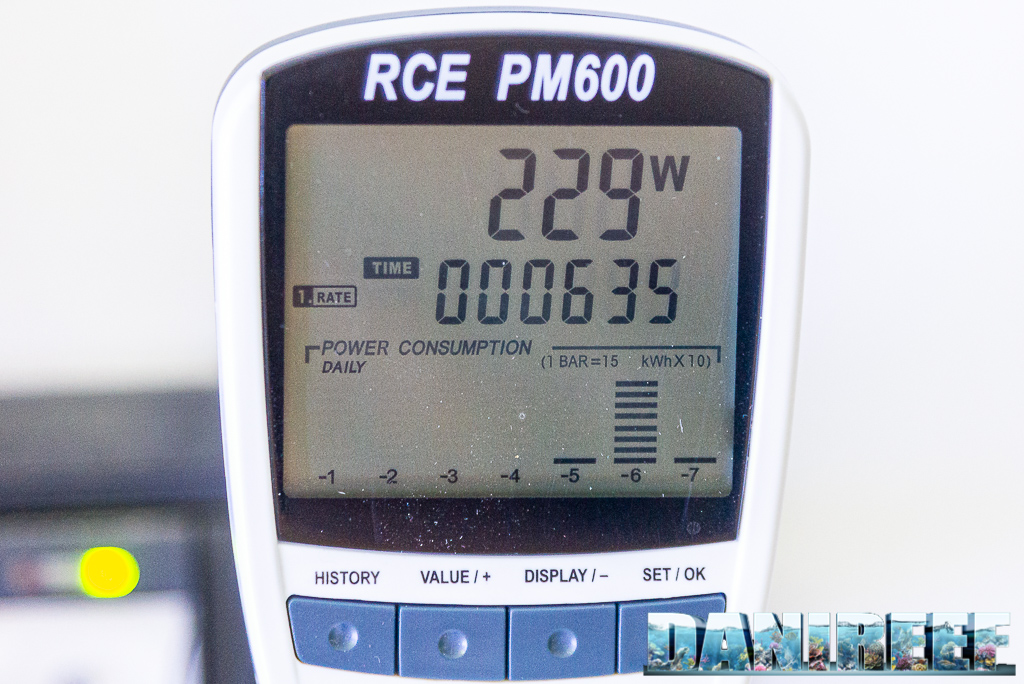
The Orphek Atlantik iCon consumes 229 watt. Identical to the declared one of 230. Great! Considering that at 17 cm the ceiling light has 1774 μmol m-2 s-1 in the middle, we can say, in perspective, that its peak value will be of 7,74 μmol m-2 s-1 w-1 (PAR per watt).
Orphek iCon and heat
The ceiling light Orphek iCon has a cooling system both active and passive, that uses four vents controlled by a sensor on the PCB. In addiction, the external shell is in aluminium in order to better spread the heat.
Let’s continue on page three with the costs, the comparison with other ceiling lights and our final comment.





